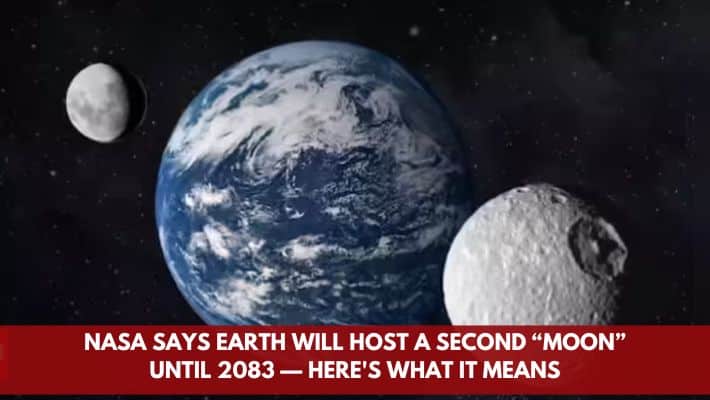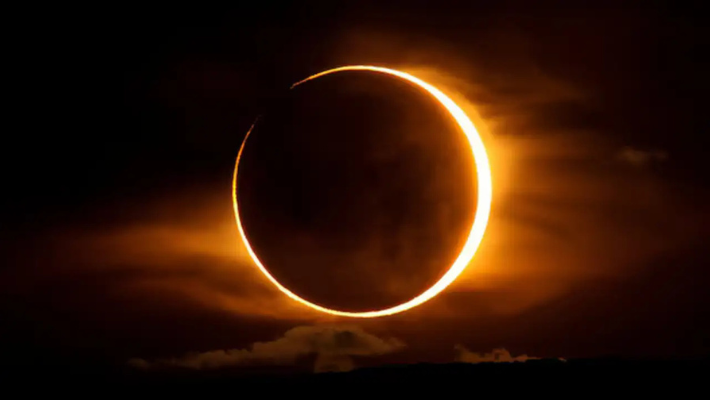NASA Says Earth Will Host a Second “Moon” Until 2083 — Here’s What It Means
In a surprising development, scientists have announced that NASA has confirmed Earth now has a second companion — not a ‘moon’ in the classic sense, but a quasi-moon that will travel alongside our planet until approximately 2083. The newly identified object, 2025 PN7, is a small asteroid that shares Earth’s orbital path around the Sun, giving the appearance of a second moon.
What is 2025 PN7?
2025 PN7 is a tiny celestial body, estimated at about 18 to 36 meters in diameter — roughly the size of a small building. It was discovered in August 2025 by a team at the University of Hawaii using the Pan-STARRS observatory.
Unlike our natural satellite the Moon, which is gravitationally bound to Earth, 2025 PN7 is not truly orbiting Earth. Instead, it orbits the Sun in a path very similar to Earth’s, so from our viewpoint it appears to accompany us — a phenomenon known as a quasi-satellite or quasi-moon.
Why “Two Moons” Until 2083?
Because 2025 PN7 is following a Sun-centred orbit nearly identical to Earth’s, astronomers anticipate it will remain in that shared orbital relationship for decades. Current modelling suggests the object will stay in this quasi-moon state until around 2083, at which point its orbit will likely evolve and it will drift away from Earth’s companion-status.
The term “two moons” must be taken with caution — Earth doesn’t gain a fully bound second moon, but rather a co-orbiting object that appears moon-like. The confirmed Moon remains the only true natural satellite.
How Close is It, and How Common Are These?
At its closest, 2025 PN7 comes within about 4 million kilometres of Earth; at its furthest, about 17 million kilometres — tens of times farther than our Moon.
Quasi-moons are rare but not unheard of. Only a handful have been documented. Their small size and faint reflectivity make them difficult to detect.
Why Is It Important / What Does It Mean?
- Scientific interest: Such objects provide a unique opportunity to study near-Earth objects (NEOs) and the complex gravitational dance in the Earth-Sun system.
- Planetary defence: While 2025 PN7 poses no known threat, tracking such co-orbiting bodies helps refine our understanding of Earth’s immediate space environment.
- Public fascination: The idea that Earth has “two moons” captures the imagination, highlighting the dynamic nature of our cosmic neighbourhood.
What It Doesn’t Mean
- It’s not a new full-sized moon: 2025 PN7 is tiny compared to the Moon, and not gravitationally locked to Earth.
- It will not significantly affect tides, climate or Earth’s dynamics: Its small size and distant orbit mean negligible direct impact.
- It is temporary: The companionship is expected to last only until circa 2083, not indefinitely.
The Timeline of the Discovery
- August 2025: 2025 PN7 is detected by University of Hawaii astronomers.
- Archival data suggest it has been in this shared orbit for decades.
- NASA and collaborating scientists confirm its status as a quasi-moon accompanying Earth until about 2083.
Final Thoughts
While Earth’s one true moon remains its enduring companion, the discovery of 2025 PN7 as a quasi-moon adds a fascinating twist to our understanding of nearby space. It invites us to broaden our conception of what “orbiting Earth” means and reminds us that even our little corner of the universe is full of dynamic surprises.
For now, keep looking up — Earth’s neighbourhood just got a little more interesting.



